Route 66 - Part 1
Day 2 Chicago – Joliet
9/23/2012
46 miles
Holiday Inn Route 66 Banquet & Conference Center
411 S Larkin Ave
Joliet, IL
There is a strong
Illinois-California connection that predates Route 66, extending back to the
early 1900, when the road which would become US 66 was cobbled together from
existing pathways. Trails, traces, fence-row tracks, farm-to-market roads, and
even some private drives were linked with stagecoach routes further west to
create something resembling a continuous roadway. Business and personal
connections were already well established. One of Hollywood’s very first
moviemakers came not from New York, but from Chicago. The harsh early winter of
1907 threatened to run Francis Boggs’s tiny film company out of business. Only
the interior scenes of Bogg’s 12-minute epic, The Count of Monte Cristo, had been shot when the snows ended any hope
of outdoor filming. Boggs, his crew, and his players headed west in search of
better conditions and a light more suited to the slow film speeds of the day.
They found what they needed in Los Angeles—bright sunshine, cheap land, and
free scenery.
The following year Boggs moved production to the West
Coast for good. Vitagraph, Mark Sennett, Cecil B. DeMille, and others followed,
of course, but Chicagoan Boggs led the way. Even the name Hollywood came not from the holly trees that were planted later,
but from an upstate neighborhood in Illinois.
Art Institute of
Chicago - Situated near the
easternmost end of Route 66, the Art Institute serves as a useful landmark for
beginning one's Mother Road adventure. The institute has been a training ground
for numerous well-known American artists over the years, and it has a
prestigious collection that includes works by such artistic luminaries as
Edward Hopper, Frederick Remington, and James McNeill Whistler.
Grant Park

Sears Tower – The tallest building on Route 66
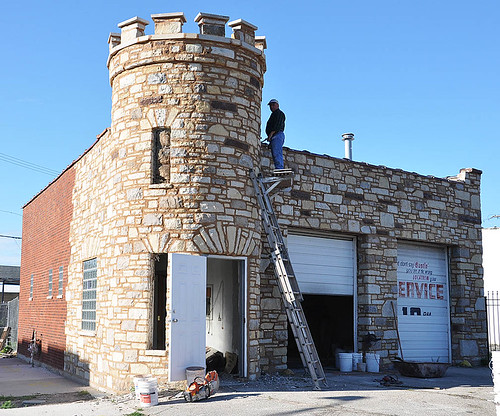
Castle Car Wash – 3801 Ogden Avenue – defunct but with unique
architecture is being restored after years of neglect and will be converted into a Greek Restaurant.
1934 FBI photograh of the Biograph soon after the shooting of Dillinger
Chicago Water Tower - The Great Fire that consumed most of Chicago in 1871 and which is popularly said to have been caused by Mrs. O'Leary's cow. It is partly to the Great Fire that Chicago owes its rebirth as a center for architecture. The famous Chicago Water Tower, built in 1869, is one of the few structures to have survived the blaze and which still stands to this day and houses a visitor center.
Lou Mitchell's
Restaurant - 565 W. Jackson
Boulevard - A restaurant in downtown Chicago (Jackson Street) on an eastbound
only section of Route 66. Formerly known as Mitchell's Cupboard, it has been in
its present location since the early 1940s. They serve breakfast all day and
still give free Milk Duds to each woman customer.
Maureen N prepares to start her adventure
The riders just before they depart the Travelodge Downtown Chicago enroute to Joliet, TL
Some of the riders just before they arrived in Romeoville, IL
Frank Lloyd Wright - [June 8,1867 - April 9, 1959] American architect known for developing his
“prairie style" of architectural design and for having achieved
significant fame and notoriety even during his lifetime-- a rare achievement.
His studio was located in Oak Park, IL (Greater Chicago) where there is a large
concentration of residences he designed, and there are quite a number of
buildings of his design still standing in several Route 66 cities, including
Dwight and Springfield, IL and Tulsa, OK.
Bunyon's
- formerly a restaurant
specializing in hot dogs and featuring a "muffler man" figure out
front holding an oversized hot dog and bun. After the restaurant closed its
doors, the muffler man was moved to Atlanta, IL, where it remains on display.
Cicero prides itself on having been a haven to Al
Capone and other mobsters during the Prohibition era. Cicero’s streets were
honeycombed with tunnels allowing gangsters and bootleggers to move unseen from
speakeasy to brothel, with even Eliot Ness and his Untouchables none the wiser.

Henry's Drive-In - 6031 W. Ogden Avenue (708-656-9344) Excellent
Polish hot dogs smothered with a pile of French Fries.
Lyons
Incorporated in 1888, Lyons is steeped in earlier historical roots. In 1673 French Explorer Louis Joliet and Jesuit missionary Father Pierre Marquette left Green Bay, Wisconsin by canoe in search of a western passage to the Pacific. As they traveled into the Spanish controlled area of Louisiana, they realized that the mighty Mississippi River drained into the already well knwn Gulf of Mexic. With winter approaching, they headed north as quickly as possible. To save time, the Potawatomi Indians who were with them encouraged changing their route to the Illinois River. The short cut led to the Des Plains River and caused the French travelers to discover “Le Portage.” This half-mile wide area of land connecting the Chicago River and the Des Plaines River, over which they could carry their canoes and supplies, was to become the discovery for which they would both become famous. Later known as the Chicago Portage. This small area became the “Gateway to the West” and was used by thousands of early settlers and traders traveling both east and west. The discovery of “Le Portage” was part of the impetus that led to Chicago becoming a center for the world trade.
Hoffman Tower - An eight-story tower castle-like structure built in 1908, beside the Des Plaines River currently housing a museum operated by the Lyons Historical Commission. The building was constructed circa 1908. There is also an adjacent Riverwalk.
Incorporated in 1888, Lyons is steeped in earlier historical roots. In 1673 French Explorer Louis Joliet and Jesuit missionary Father Pierre Marquette left Green Bay, Wisconsin by canoe in search of a western passage to the Pacific. As they traveled into the Spanish controlled area of Louisiana, they realized that the mighty Mississippi River drained into the already well knwn Gulf of Mexic. With winter approaching, they headed north as quickly as possible. To save time, the Potawatomi Indians who were with them encouraged changing their route to the Illinois River. The short cut led to the Des Plains River and caused the French travelers to discover “Le Portage.” This half-mile wide area of land connecting the Chicago River and the Des Plaines River, over which they could carry their canoes and supplies, was to become the discovery for which they would both become famous. Later known as the Chicago Portage. This small area became the “Gateway to the West” and was used by thousands of early settlers and traders traveling both east and west. The discovery of “Le Portage” was part of the impetus that led to Chicago becoming a center for the world trade.
Hoffman Tower - An eight-story tower castle-like structure built in 1908, beside the Des Plaines River currently housing a museum operated by the Lyons Historical Commission. The building was constructed circa 1908. There is also an adjacent Riverwalk.

Chicago Portage
National Historic Site
– 4800 S. Harlem Avenue – Sometimes referred to as “Chicago’s Plymouth Rock.”
Snowflake
Drive-In
Berwyn
The town has lined old
Route 66 with a series of glass-block markers but didn't do much to save its
most remarkable work of art: The Spindle, a tower of ruined cars impaled on a
50-foot steel spike, which stood in the parking lot of a shopping mall until
mid-2008, when it was removed in the middle of the night to make way for yet
another Walgreen's. You may have seen The Spindle in the 1990s comedy Wayne's World.
Willowbrook
Dell Rhea's Chicken
Basket - 645 Joliet Road [630-325-0780] It is a welcoming old
roadside tavern, with famously fabulous chicken dinners and frequent live
music.
Romeoville
White Fence Farm - A large dining room complex specializing in
chicken dinners that dates from the 1920s. There is a large, attention getting
fiberglass chicken by the highway side, and the grounds also include a petting
zoo, antique car museum, and several other tourable collections Since its beginning in the early 1920's, White Fence Farm, located near Romeoville, Illinois, has been recognized throughout the mid-west for its outstanding chicken dinners. "The World's Greatest Chicken" is certainly a statement that has stood the test of time. White Fence Farm has earned a reputation over the years among diners as a truly unique, friendly, and courteous place to have dinner.
Isle de la Cache - 501 E. Romeo Road – A Cultural history museum.
A little piece of
highway history happened when the original version of Route 66 crossed the even
older Lincoln Highway, America's first transcontinental road. Notable people who hail from or live in Plainfield, IL include:
- Mellisa McCarthy, actress -- McCarthy first garnered recognition for her role as Sooke St. James on the WB network television series Gilmore Girls. She portrayed Dena on the ABC sitcom Saantha Who?. Mccarthy was then cast as Molly Flynn on the CBS sitcom Mike & Molly.
- Don Swayze, actor -- Swayze was born in Houston, Texas, the middle son of Patsy Yvonne Helen (nee Karnes, a choreographer, dance instructor, and dancer, and Jesse Wayne Swayze, an engineering drafter. He is a younger brother of the late actor Patrick Swayze and of sister Vicky Lynn, and the older brother of Sean Kyle and adopted sister Bora Song (nicknamed Bambi). He is a sixth cousin once removed of commentator John Cameron Swayze, and a relative of noted Texas Revolution soldier HenryKarnes.
The "City of Steel and Stone" has
a rough reputation that doesn't really reflect its welter of historic
attractions.
“City of Spires”
- Nickname for the city of Joliet, IL, said to derive from the plethora of
churches in the area.

Old Joliet State Prison – 1125 Collins Street – Now closed state prison from which John Belushi ( aka "Joliet Jake") is released at the beginning of the 1980 movie The Blues Brothers. The first prisoners were received here in 1858. It is also the location for the first season of FOX Network's Prison Break television show and the movie Let's Go to Prison.

Route 66 Raceway [815-722-5500] - Where NHRA drag races, NASCAR stock car races, and occasional pop music concerts are held.






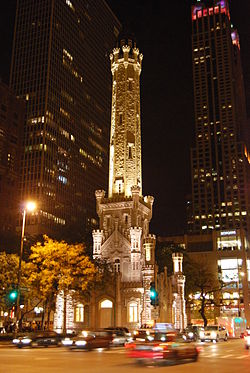
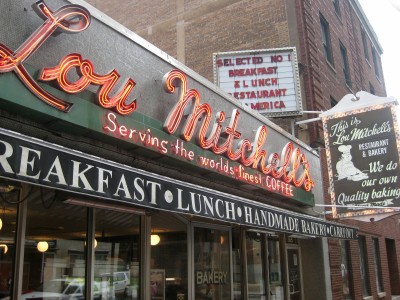







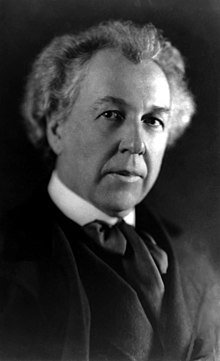






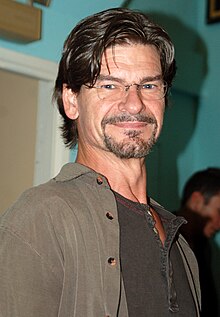

Hi Judy,
ReplyDeleteThanks for posting your blog. I'll look forward to following you to Amarillo. Anyone from the cross country ride there besides Rich and Bill. I thought I saw Vicki in your photos. Please tell Rich and Bill hello for me.
Jesse